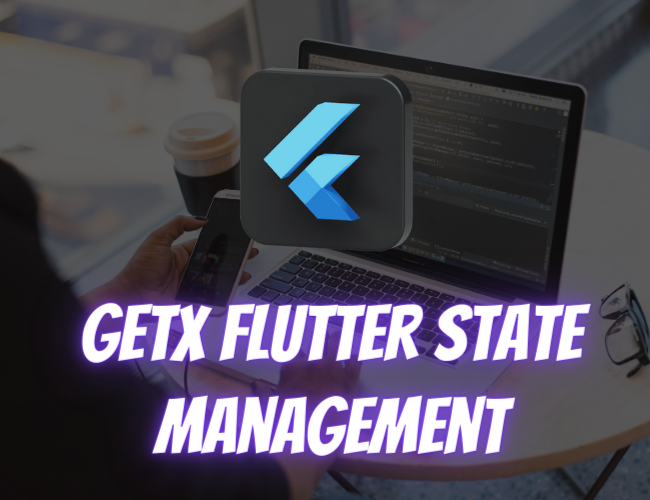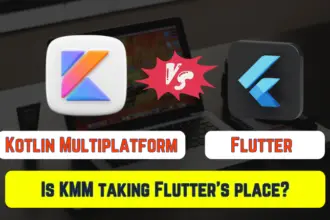State management plays a vital function inside the development of Flutter apps because it governs the storage, updating, and sharing of facts across specific additives of the application. Although Flutter offers more than one alternatives for state management, developers regularly search for light-weight, efficient, and consumer-pleasant solutions to simplify the method. GetX is a package deal that has received enormous traction inside the Flutter community due to its simplicity, excessive overall performance, and full-size skills.
This complete manual will delve into the idea of GetX, its functioning, and how you could utilize its robust capabilities to beautify state management for your Flutter applications.
Understanding GetX
GetX is a Flutter bundle designed for green kingdom management, providing loads of gear and utilities. It is known for its light-weight nature and excessive-performance capabilities. Created by way of the identical developer behind the Get bundle, GetX gives a person-pleasant and declarative API that streamlines responsibilities like routing, dependency injection, and state management.
Key features of GetX include:
- State Management: GetX simplifies state control with the aid of supplying a reactive answer that allows developers to resultseasily update and listen to modifications in the application’s state.
- Dependency Injection: GetX simplifies dependency injection with its integrated gadget, making it clean to manage dependencies and inject them into widgets or services.
- Navigation Management: GetX streamlines navigation management with a declarative routing machine, taking into consideration seamless navigation among specific monitors and routes.
- Internationalization (i18n): GetX consists of equipment for dealing with internationalization and localization in Flutter applications, facilitating assist for multiple languages.
- Snackbars and Dialogs: GetX gives utilities for displaying snackbar messages, dialogs, and overlays in a simple and green way.
Getting Started with GetX
To start using GetX in your Flutter project, you need to add the get package to your pubspec.yaml file:
dependencies:
get: ^4.1.4Once you have added the get package to your dependencies, you can import it into your Dart files and start using its features:
import 'package:get/get.dart';1. State Management with GetX
GetX streamlines state management in Flutter through the use of reactive controllers, which facilitate the management and modification of the application’s state. Below is a guide on developing a basic counter application with GetX for state management.
class CounterController extends GetxController {
var count = 0.obs;
void increment() {
count.value++;
}
}
class CounterPage extends StatelessWidget {
final controller = Get.put(CounterController());
@override
Widget build(BuildContext context) {
return Scaffold(
appBar: AppBar(title: Text('GetX Counter')),
body: Center(
child: Column(
mainAxisAlignment: MainAxisAlignment.center,
children: [
Obx(() => Text('Count: ${controller.count}')),
RaisedButton(
onPressed: () => controller.increment(),
child: Text('Increment'),
),
],
),
),
);
}
}
In the given example, a CounterController class is defined, which extends GetxController and encompasses a reactive variable called count to hold the value of the counter. Subsequently, a CounterPage widget is instantiated, utilizing Obx to observe any modifications in the count variable and dynamically refresh the user interface.
2. Dependency Injection with GetX
GetX simplifies dependency injection in Flutter by providing a built-in service locator that manages the creation and retrieval of dependencies. Here’s how you can use GetX for dependency injection:
class ApiService {
void fetchData() {
// Fetch data from API
}
}
class HomeController extends GetxController {
final ApiService apiService = Get.find();
void fetchData() {
apiService.fetchData();
}
}
In the example provided, we establish both an ApiService class and a HomeController class, with the latter relying on the former. Through the utilization of Get.find() to fetch the ApiService instance within the HomeController, we are able to conveniently access and employ the service within the controller.
3. Navigation Management with GetX
GetX streamlines the manner of managing navigation in Flutter via imparting a declarative routing system that facilitates seamless transitions between various screens and routes. Let’s discover how you can leverage GetX for green navigation management:
class HomePage extends StatelessWidget {
@override
Widget build(BuildContext context) {
return Scaffold(
appBar: AppBar(title: Text('Home')),
body: Center(
child: RaisedButton(
onPressed: () => Get.to(SecondPage()),
child: Text('Go to Second Page'),
),
),
);
}
}
class SecondPage extends StatelessWidget {
@override
Widget build(BuildContext context) {
return Scaffold(
appBar: AppBar(title: Text('Second Page')),
body: Center(
child: RaisedButton(
onPressed: () => Get.back(),
child: Text('Go Back'),
),
),
);
}
}
In the given example, we establish widgets named HomePage and SecondPage. In this state of affairs, HomePage directs to SecondPage with the aid of making use of the Get.To(SecondPage()) characteristic, whilst SecondPage navigates lower back to the preceding display through employing the Get.back() function.
4. Internationalization with GetX
GetX facilitates internationalization and localization in Flutter apps by offering resources for translation management and language switching. Here is a tutorial on leveraging GetX for internationalization.
class TranslationController extends GetxController {
var locale = 'en_US'.obs;
void changeLocale(String newLocale) {
locale.value = newLocale;
}
}
class TranslationPage extends StatelessWidget {
final controller = Get.put(TranslationController());
@override
Widget build(BuildContext context) {
return Scaffold(
appBar: AppBar(title: Text('GetX i18n')),
body: Center(
child: Column(
mainAxisAlignment: MainAxisAlignment.center,
children: [
Obx(() => Text('Current Locale: ${controller.locale}')),
RaisedButton(
onPressed: () => controller.changeLocale('es_ES'),
child: Text('Switch to Spanish'),
),
],
),
),
);
}
}
In the example above, a TranslationController class is established to handle the current locale and offer a function for changing languages. The TranslationPage widget exhibits the current locale and enables users to switch to another language.
Advanced Features of GetX
1. Snackbar and Dialog Management
GetX simplifies the display of snackbar messages, dialogs, and overlays in Flutter applications. Here’s how you can use GetX to show a snackbar message:
Get.snackbar(
'Success',
'Operation completed successfully',
snackPosition: SnackPosition.BOTTOM,
);2. Routing Parameters and Arguments
GetX allows you to pass parameters and arguments when navigating between screens. Here’s how you can pass arguments to a new screen using GetX:
Get.to(SecondPage(), arguments: {'id': 123});In the SecondPage widget, you can retrieve the arguments using Get.arguments:
final args = Get.arguments;
final id = args['id'];3. State Persistence
GetX provides tools for persisting state across app restarts using shared preferences or other storage mechanisms. Here’s how you can persist state using GetX:
class PersistenceController extends GetxController {
final storage = GetStorage();
var name = ''.obs;
@override
void onInit() {
super.onInit();
name.value = storage.read('name') ?? '';
}
void setName(String newName) {
name.value = newName;
storage.write('name', newName);
}
}In the above example, we use the GetStorage class from the get_storage package to persist the name state across app restarts.
Conclusion
GetX offers a sturdy and bendy state management solution for Flutter, simplifying tasks like state control, dependency injection, navigation, and internationalization. By utilizing the powerful features of GetX, Flutter builders can create green programs without problems.
This guide covers the basics of GetX, which includes country control, dependency injection, navigation, and internationalization. It additionally delves into advanced functions like snackbar and conversation control, routing parameters, and state endurance.
Whether you’re a newbie trying to streamline your Flutter improvement procedure or a pro developer in need of a lightweight country management answer, GetX gives a flexible toolkit to enhance your Flutter projects. Try GetX for your next Flutter app and witness the efficiency and productiveness it brings in your development workflow.
















